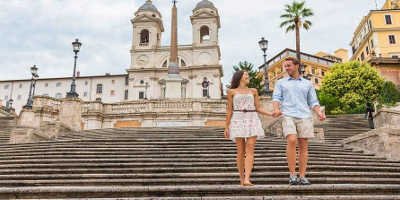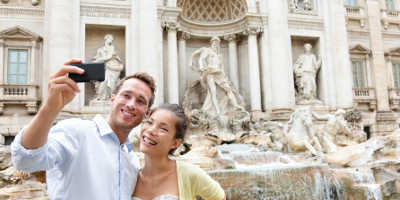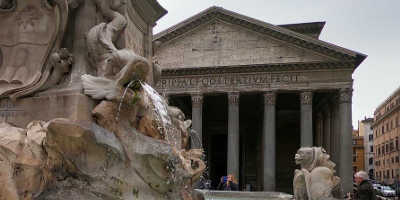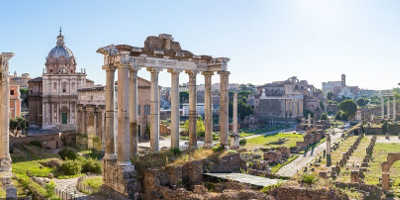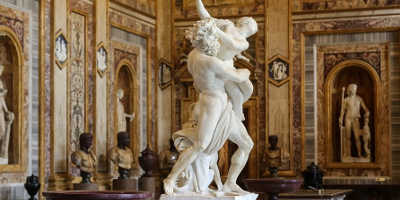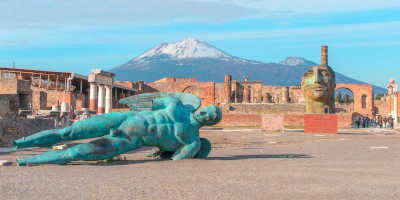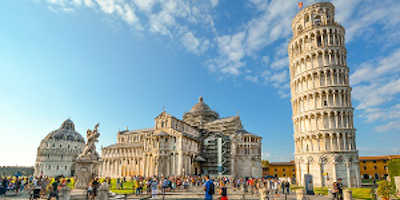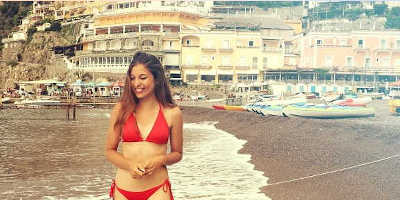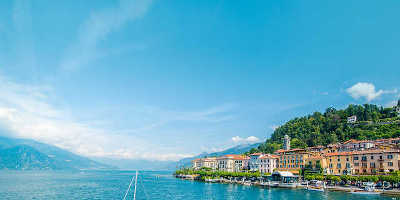Which unusual spots in Rome should you visit?
There’s more to Rome than the Colosseum and the Trevi Fountain, you just need to know where to look! Whilst the main sites of the Eternal City are popular for a reason, we encourage you to appreciate all aspects of Rome!
So, you think you’ve seen everything Rome has to offer? We are here to tell you-you’re wrong! Whether you a first-time traveller, a long-time local or just stopping through, it is not just the main sights that are worth checking out. We have rifled through all the nooks and crannies of this incredible city and have discovered the best unusual travel spots that are worth a visit!
-
Santa Maria Della Concezione Crypts
This attraction is not for the faint hearted! Santa Maria della Concezione Crypts is decorated with no ordinary material, but with over four thousand friar’s bones. This shocking and remarkable crypt has bones covering the walls in stunning patterns, making decorative objects such as chandeliers. Literary fans may know that Mark Twain visited the site in the 19th century, making such an impact that he included it in his travel book ‘Innocents Abroad’ (1869). When Twain asked the monks why they decorated the walls with their dead brethren rather than simply burying them, the monk responded that it is a way of reminding themselves that death can come at any time. Such sentiment is displayed on the plaque that lies with the bones, reading “What you are now, we once were; what we are now, you shall be”. If that doesn’t give you shivers, we don’t know what will!
-
The Mouth of Truth
The Bocca della Verita or Mouth of Truth is a huge marble mask carving of a man’s face on an ancient manhole cover. This huge sculpture located on the left wall of the Santa Maria in Cosmedin church is a popular attraction largely due to the myth attached to it. Dedicated to the God of the Sea, the ancient carving is said to bite the hand of liars. An ancient version of a modern day lie detector, legend states that if anyone put their hand inside the mouth and told a lie, the mouth would close, cutting the person’s hand clean off. This legend has been known since the Middle Ages and used for decades for any suspicious wives or husbands. While this seems to be fictitious, the superstition still persists to this day. Would you dare to put your hand in the Mouth of Truth?
-
The Dome Illusion
The Church of St. Ignatius Loyola is famous for its incredible art covering the ceiling and walls. What makes this building so unusual and fascinating, is the illusion of a curved dome on the ceiling. When funding for the church ran out in 1642 before the glorious dome could be built, the plans were scrapped. Instead, artist Andrea Pozzo designed and painted a life-size illusion of a dome inside the building, fooling the eyes of visitors. Using a technique called quadratura, a mixture of realist imagery and foreshortening, Pozzo created the illusion of a 3D space on an otherwise flat ceiling. This incredible piece of illusionist ceiling art is definitely worth a visit, to witness the spectacular skill of baroque painters. When you go, follow the markers that indicate the best place to view the “dome”, and see if you’re convinced.
-
Torre Argentina
Stand in the same spot where Julius Caesar was believed to have been murdered. Torre Argentina is a square in Rome which holds the remains of what was once the Theatre of Pompey, in the ancient Campus Martius. In February 2019, the Mayor of Rome announced that the site would be installed with walkways so the general public would be able to tour the ruins for the first time. Large columns, stairs and rubble are all that is left of the theatre, but in recent years a well-loved cat sanctuary has used the area to look after the many stray cats that roam around the city. Run by a group of volunteers who feed, care for and sterilize the cats to control their population. They have also managed to find loving homes for the cats, with 125 cats being adopted each year. If you’re history fanatic or feline lover, go to Torre Argentina!
-
Rome’s Pyramid
The Pyramid of Cestius is an unusual sight to see within the city of Rome. This Egyptian like structure is, in fact, the result of a fashion in Rome during the heights of the Empire. Rome was inspired by the Egyptian’s style and was built in 12 BC as a burial place for the religious leader Gaius Cestius. This temple is only open two days every month, so make sure you arrive on the right day.
-
Porta Alchemica
Standing in the middle of a Roman park is what locals call, the magic door. Located in the central district of Piazza Vittorio, remains an alchemist door, known as a portal into the secretive world of 1600s alchemy. The monument was built between 1678 and 1680 by Roman nobleman Massimiliano Palombara. Much mystery still surrounds the door, but it is believed that the symbols and inscriptions around it were put there deliberately in the hope that a passer-by would see it, know it and translate it for the nobleman.
-
Villa Doria Pamphili
For some greenery, why not visit Rome’s largest public park, with gorgeous gardens spanning far and wide? Constructed for the Pamphili family in the 17th century. Apart from nature, the park holds history, art and engineering amazements. Why not spend a day cycling, running, strolling or lazing about in this gorgeous green escape?
-
Via Appia
For history buffs, the Appia Antica is one of the oldest and most important Roman roads that still exists from the ancient republic. Dating back to ancient Roman times, this famous road was used for moving troops down to the port of Brindisi in southeast Italy. There are numerous tourist attractions including catacombs and basilicas along the road you can stop off at along your walk down the stretch.


